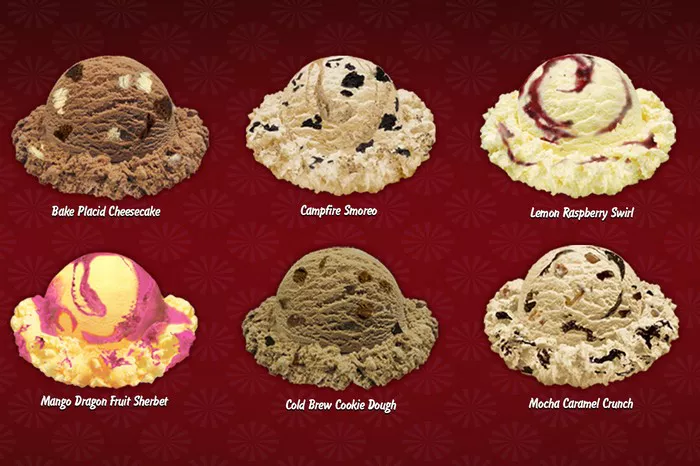Becoming an Elephant House Ice Cream distributor can be an exciting business opportunity for entrepreneurs looking to enter the frozen treats market. However, like any business venture, understanding the costs involved is crucial for making informed decisions. In this article, we will delve into the various expenses associated with becoming an Elephant House Ice Cream distributor and provide insights into what aspiring distributors can expect.
Understanding the Initial Investment
When considering how much does it cost to become an Elephant House Ice Cream distributor, one must first understand the initial investment required. This investment typically includes expenses such as franchise fees, equipment purchases, initial inventory, and marketing expenses.
Franchise fees vary depending on the region and specific agreements with the company. These fees often cover the rights to use the Elephant House Ice Cream brand name, access to training and support, and other resources provided by the franchisor. Prospective distributors should inquire with Elephant House Ice Cream representatives to get a clear understanding of the franchise fees applicable to their location.
Equipment purchases constitute another significant portion of the initial investment. Distributors will need freezers, refrigerators, storage units, and possibly vehicles for transportation. The cost of equipment can vary based on factors such as size, quality, and whether they are purchased new or used.
Initial inventory is another expense to consider. Distributors will need to stock up on a variety of Elephant House Ice Cream products to meet customer demand. While the initial inventory investment can be substantial, it is essential for ensuring that distributors have an adequate selection of products to offer their customers from the outset.
Marketing expenses are also an essential consideration. Distributors will need to allocate funds for advertising, promotions, and other marketing efforts to attract customers and build brand awareness in their target market.
In summary, the initial investment to become an Elephant House Ice Cream distributor encompasses franchise fees, equipment purchases, initial inventory, and marketing expenses. Prospective distributors should carefully assess these costs and develop a comprehensive budget before moving forward with their venture.
Ongoing Operational Costs
In addition to the initial investment, becoming an Elephant House Ice Cream distributor also entails ongoing operational costs. These expenses are incurred regularly to keep the business running smoothly and effectively.
One of the primary ongoing operational costs is the cost of goods sold (COGS). This includes the cost of purchasing Elephant House Ice Cream products from the franchisor, as well as any additional ingredients or materials needed for preparation and serving.
Other ongoing operational costs may include rent or lease payments for the distribution facility, utilities, insurance, maintenance and repairs, employee wages, and marketing expenses. It is essential for distributors to budget for these expenses to ensure the long-term viability of their business.
Furthermore, distributors may also need to consider additional costs associated with compliance with regulations and licensing requirements. Depending on the region and industry regulations, distributors may need to obtain permits or licenses to operate legally. These costs can vary widely depending on the location and specific requirements.
Overall, ongoing operational costs are an essential consideration for Elephant House Ice Cream distributors. By carefully managing these expenses and budgeting effectively, distributors can ensure the profitability and sustainability of their business over the long term.
See Also: the Costs of Opening a Colonial Ice Cream Franchise
Financial Considerations and Return on Investment
When evaluating how much does it cost to become an Elephant House Ice Cream distributor, it is essential to consider the potential return on investment (ROI). While the initial investment and ongoing operational costs can be significant, distributors have the opportunity to generate revenue and profits through sales of Elephant House Ice Cream products.
The potential ROI for Elephant House Ice Cream distributors can vary depending on factors such as location, market demand, competition, and operational efficiency. Distributors in high-traffic areas with strong demand for frozen treats may see higher sales and profitability than those in less-populated or competitive markets.
Additionally, distributors can increase their ROI by implementing effective marketing strategies, offering excellent customer service, and continuously monitoring and optimizing their operations for efficiency and profitability.
It is also essential for distributors to consider the long-term growth potential of their business when evaluating the ROI. As the Elephant House Ice Cream brand continues to expand and gain market share, distributors may have opportunities to grow their sales and profitability over time.
In conclusion, while becoming an Elephant House Ice Cream distributor entails significant upfront and ongoing costs, it also offers the potential for a favorable return on investment. By carefully managing expenses, implementing effective marketing strategies, and providing excellent customer service, distributors can build a successful and profitable business over the long term.
Conclusion
In conclusion, the question of how much does it cost to become an Elephant House Ice Cream distributor encompasses various factors and expenses that aspiring entrepreneurs must consider. From the initial investment in franchise fees, equipment, inventory, and marketing to ongoing operational costs and considerations of return on investment, becoming an Elephant House Ice Cream distributor requires careful planning and financial management.
Despite the significant costs involved, becoming an Elephant House Ice Cream distributor can be a rewarding and profitable business opportunity for entrepreneurs who are willing to invest the time, effort, and resources required to succeed. With the support and resources provided by the franchisor, as well as effective business strategies and a commitment to excellence, distributors can build a successful and sustainable business in the competitive frozen treats market.
Overall, while the costs of becoming an Elephant House Ice Cream distributor are not insignificant, the potential rewards and opportunities for growth make it a compelling option for entrepreneurs looking to enter the industry. By carefully evaluating the expenses involved and developing a comprehensive business plan, aspiring distributors can position themselves for success in this exciting and lucrative market.
Related topics:


